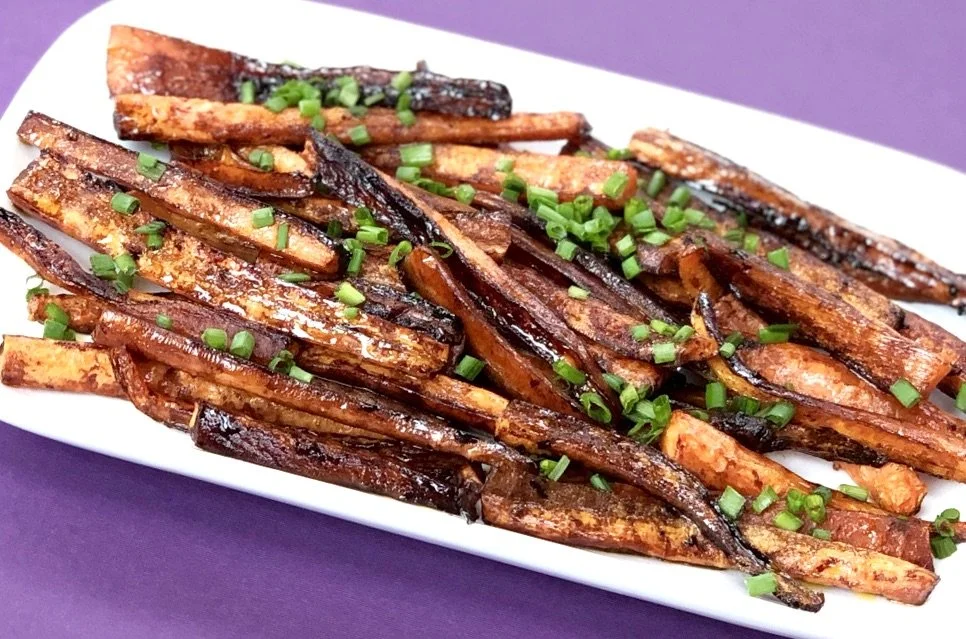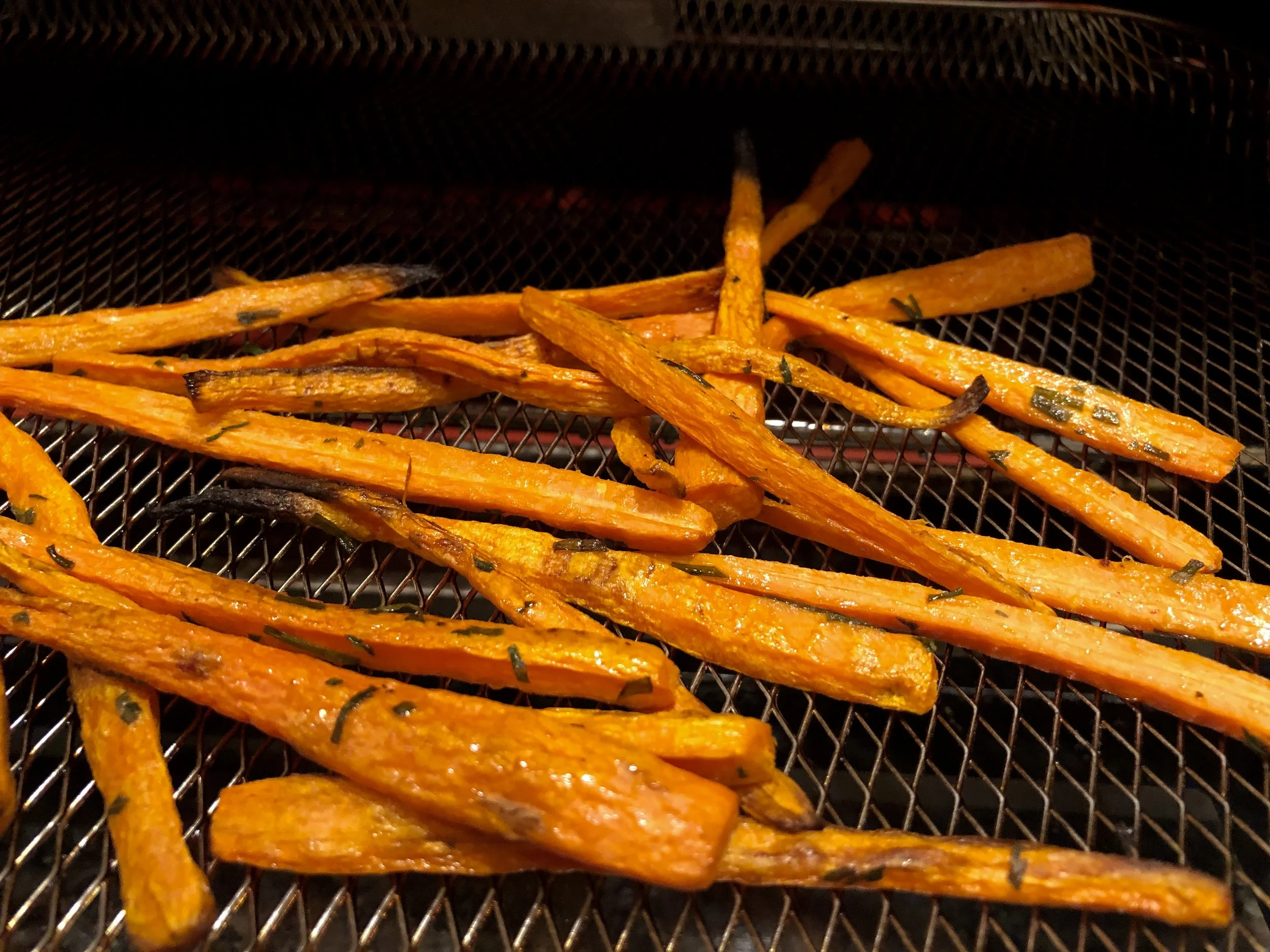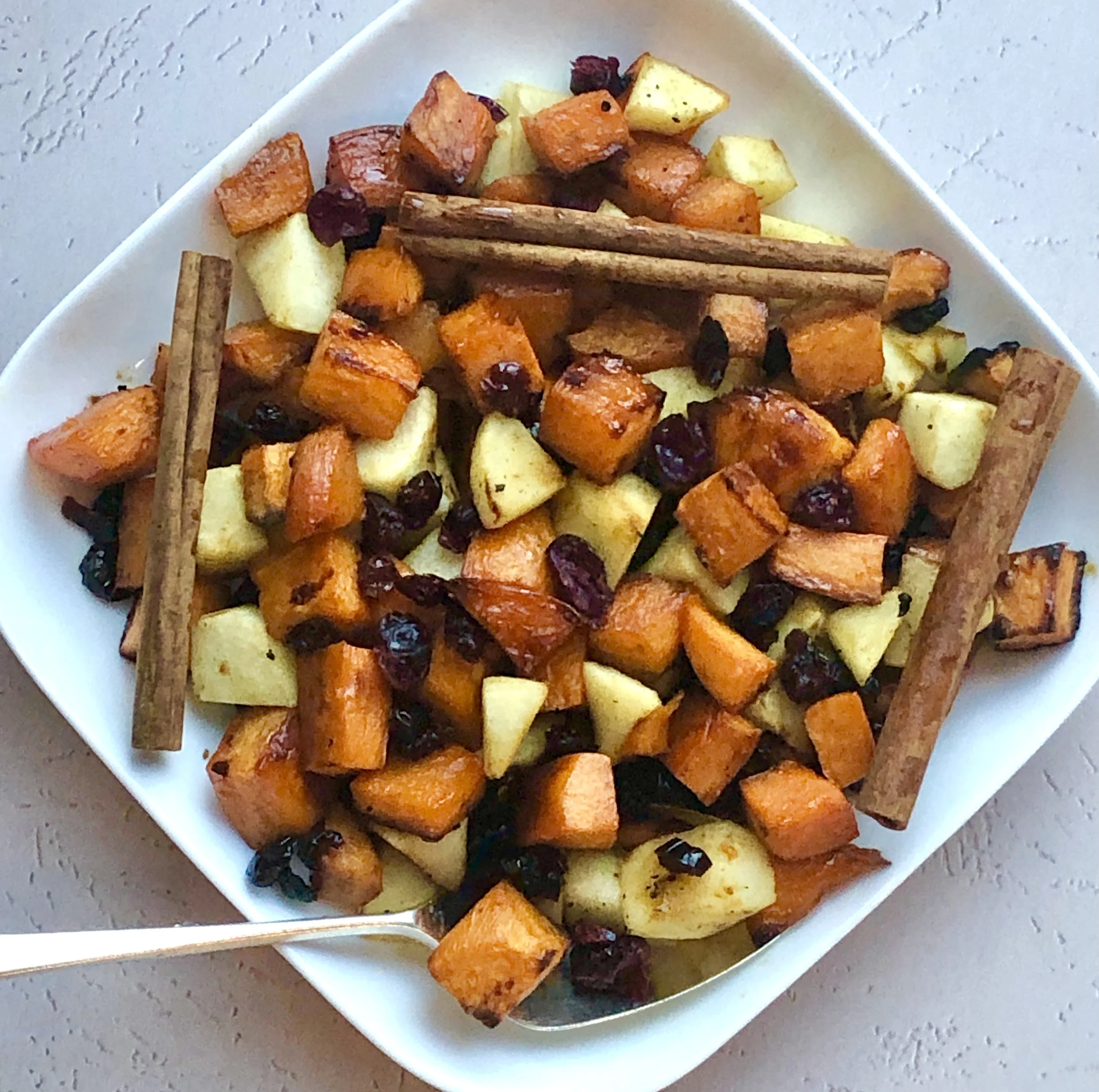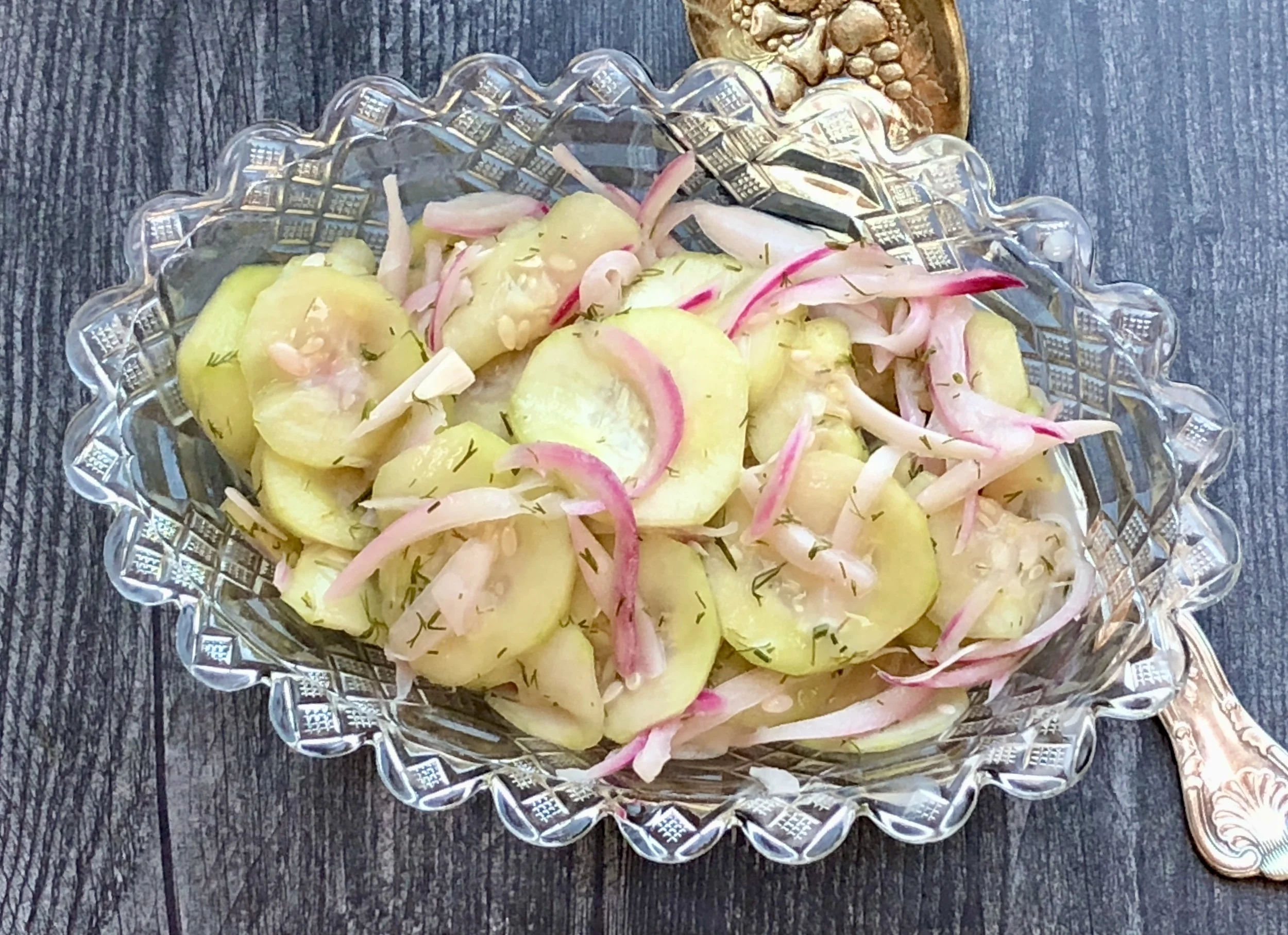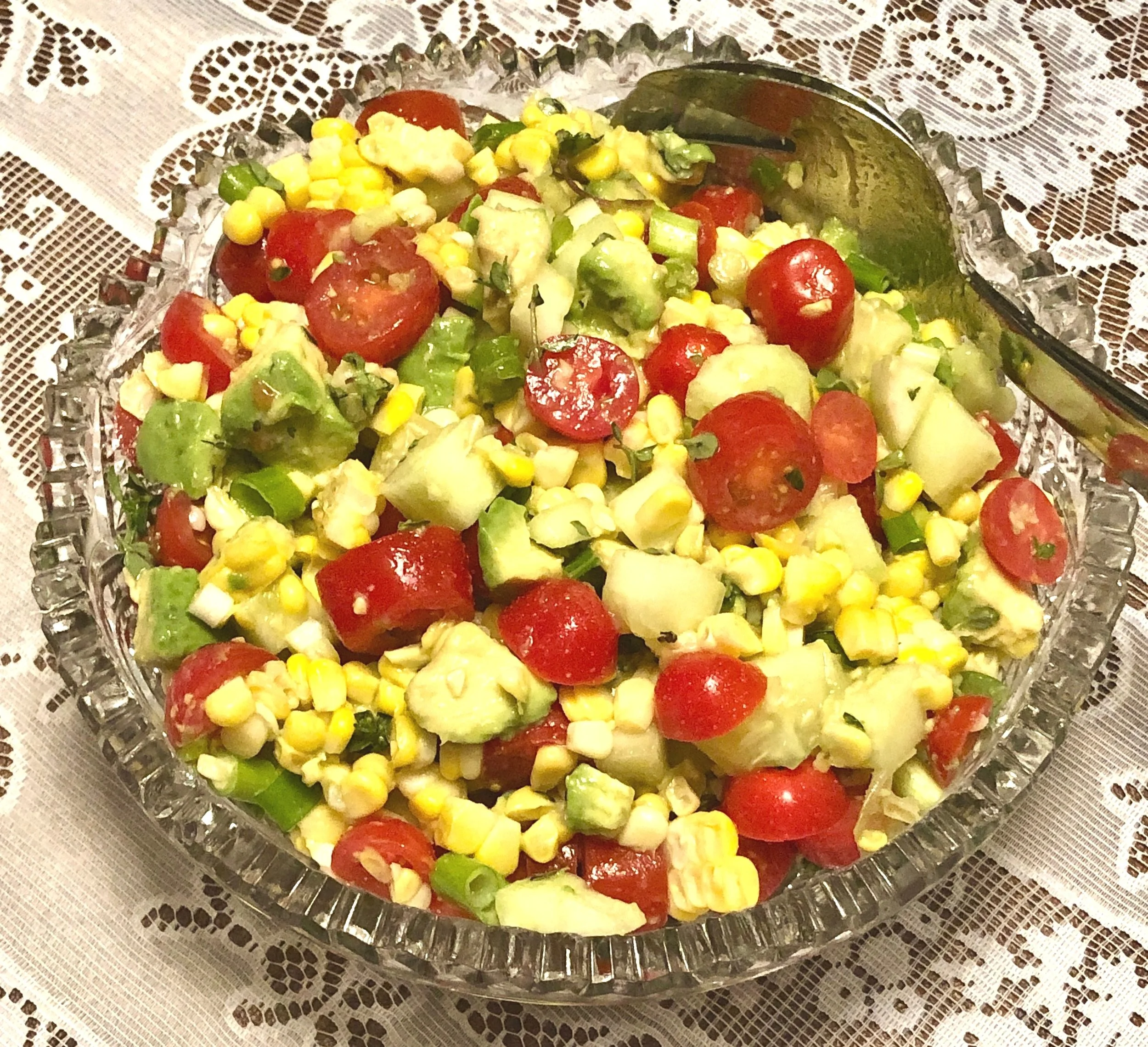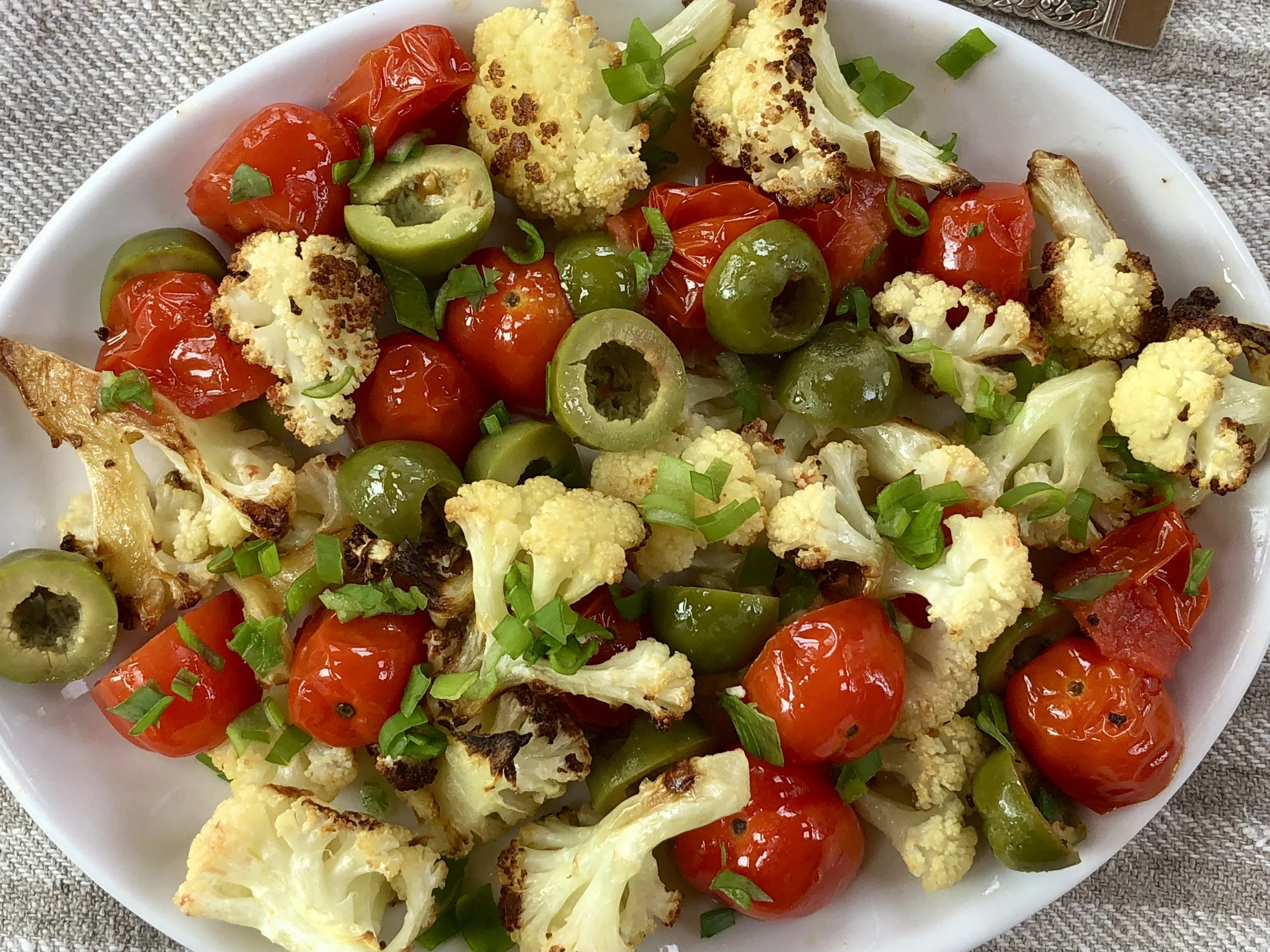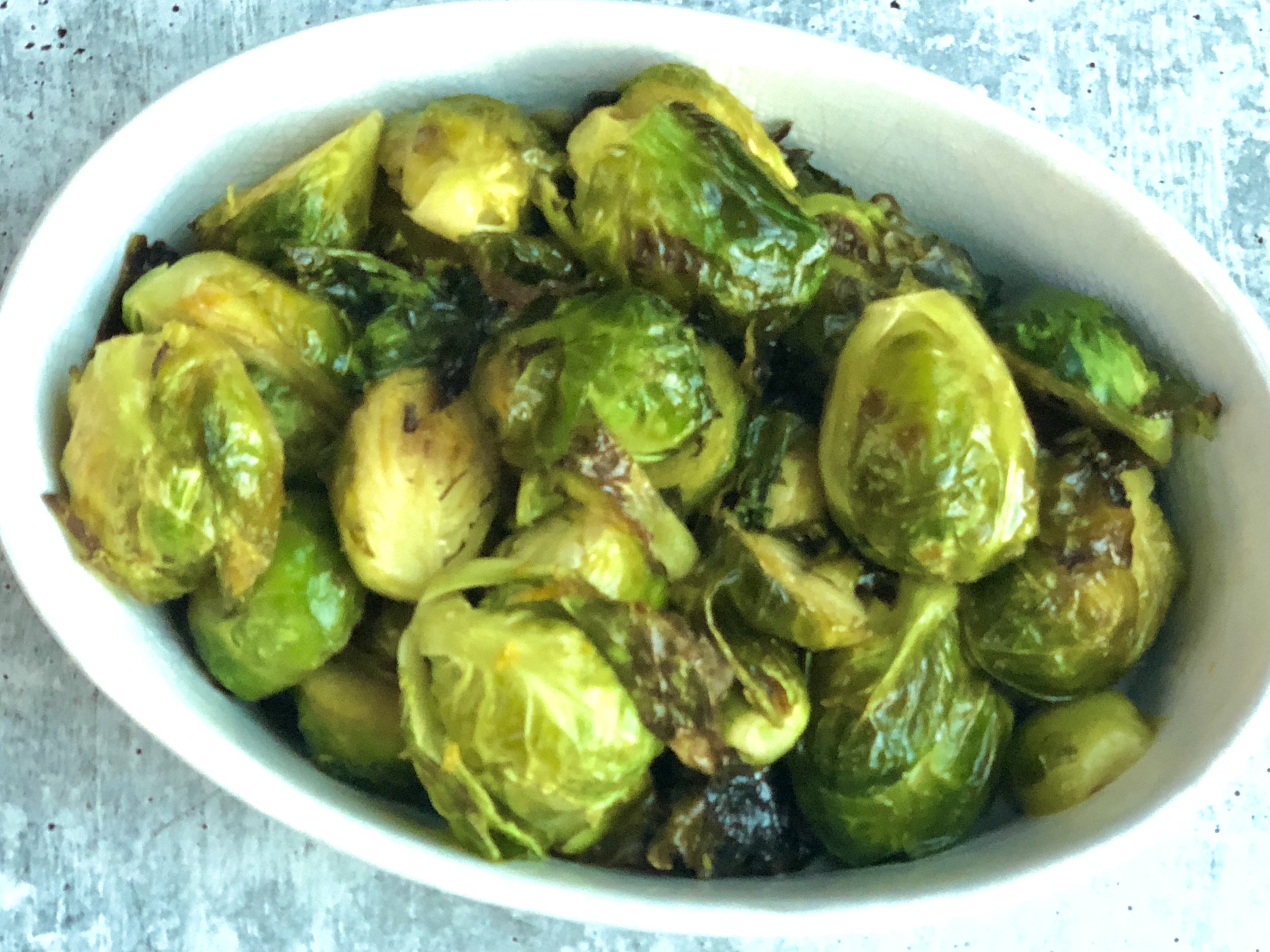I’ve been experimenting with my air fryer and — I know people will vigorously disagree with me, but —- I’m not as big a fan as others seem to be.
Granted — vegetables come out really good: crispy, tender, attractive. And the cooking is relatively quick. I’ve also been successful airfrying unbreaded chicken wing parts, shnitzel and other items (e.g. grilled cheese). It’s also terrific and handy for heating hors d’oeuvre.
But other foods have been a disaster. “Fried chicken” (more on that in another post), for example. Sorry folks, no, it doesn’t taste like or have the texture of actual fried fried chicken.
Latkes? Absolutely not. The pan fried latkes were perfect (more on that in another post) and the airfryer ones went right into the garbage. They were leaden, not crisp, not even completely cooked no matter how many ways I tried.
Carrots? Perfect. The photo above shows carrots made in my convection oven (then dressed with Balsamic vinegar and chives) and the bottom photo shows air fried carrots. Taste, texture both terrific. So, yay for the airfryer
BUT:
even though I have a large airfryer (Breville), there is a limit to the amount of carrots and other vegetables that I can cook at one time. So, while it’s perfect when I’m making dinner for just Ed and me or maybe when there’s two other people, it’s useless when I have the family (11 of us)
there’s more to clean up: the fry basket plus wherever the drips from food happen as opposed to removing the parchment paper I use when I “oven fry” on a jelly roll pan in my convection oven
the airfryer is quicker but not substantially: about 15 minutes for the carrots compared to 20 minutes in the convection oven (although it must be said that I used twice as many carrots when I cooked them by convection).
Anyway, that’s my take. I will continue to experiment!
